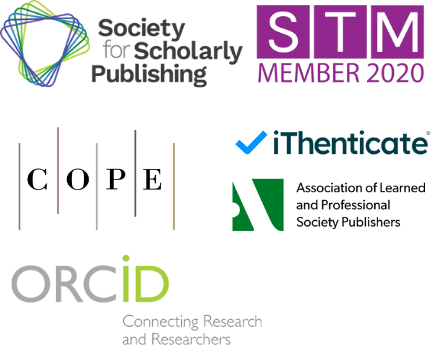Electrocatalytic and Enzymatic Inhibition by Metal Complexes
DOI:
https://doi.org/10.71222/ah44z809Keywords:
metal complexes, electrocatalysis, enzyme inhibition, coordination polymers, transition metals, bioinorganic chemistryAbstract
Metal complexes have emerged as versatile compounds with significant applications in both electrocatalysis and enzymatic inhibition. The unique electronic properties and coordination geometries of transition metal complexes enable them to facilitate electron transfer processes in electrocatalytic reactions while simultaneously interacting with biological enzymes to modulate their activity. This paper explores the dual functionality of metal complexes in advancing electrocatalytic processes for energy conversion and environmental remediation, as well as their therapeutic potential through enzyme inhibition mechanisms. The coordination environment, oxidation states, and ligand architectures play crucial roles in determining the efficacy of metal complexes in both domains. Recent developments in copper-based coordination polymers, ruthenium catalysts, and zinc-containing metalloenzyme inhibitors demonstrate the growing importance of rational design strategies. Understanding the structure-activity relationships and mechanistic pathways is essential for developing next-generation catalysts and therapeutic agents. This review examines the current state of metal complex applications, highlighting key design principles, mechanistic insights, and future directions for research in this interdisciplinary field spanning materials chemistry, bioinorganic chemistry, and medicinal chemistry.
References
1. C.-M. Che and F.-M. Siu, “Metal complexes in medicine with a focus on enzyme inhibition,” Current Opinion in Chemical Biology, vol. 14, no. 2, pp. 255–261, 2010, doi: 10.1016/j.cbpa.2009.11.015.
2. K. J. Kilpin and P. J. Dyson, “Enzyme inhibition by metal complexes: concepts, strategies and applications,” Chemical Science, vol. 4, no. 4, pp.1410-1419, 2013, doi: 10.1039/c3sc22349c.
3. Dmytro Havrylyuk, D. K. Heidary, and E. C. Glazer, “The Impact of Inorganic Systems and Photoactive Metal Compounds on Cytochrome P450 Enzymes and Metabolism: From Induction to Inhibition,” Biomolecules, vol. 14, no. 4, p. 441, 2024, doi: 10.3390/biom14040441.
4. F. Ding, N. Su, C. Ma, B. Li, W.-L. Duan, and J. Luan, “Fabrication of two novel two-dimensional copper-based coordination polymers regulated by the ‘V’-shaped second auxiliary ligands as high-efficiency urease inhibitors,” Inorganic Chemistry Communications, vol. 170, p. 113319, 2024, doi: 10.1016/j.inoche.2024.113319.
5. N. Kaeffer and W. Leitner, “Electrocatalysis with Molecular Transition-Metal Complexes for Reductive Organic Synthesis,” JACS Au, vol. 2, no. 6, pp. 1266–1289, 2022, doi: 10.1021/jacsau.2c00031.
6. N. W. Kinzel, C. Werlé, and W. Leitner, “Transition Metal Complexes as Catalysts for the Electroconversion of CO2: An Organometallic Perspective,” Angewandte Chemie International Edition, vol. 60, no. 21, pp. 11628–11686, 2021, doi: 10.1002/anie.202006988.
7. Y. Yu, T. Wang, Y. Zhang, J. You, F. Hu, and H. Zhang, “Recent Progress of Transition Metal Compounds as Electrocatalysts for Electrocatalytic Water Splitting,” The Chemical Record, vol. 23, no. 11, p.e202300109, 2023, doi: 10.1002/tcr.202300109.
8. F. Ding, C. Ma, W.-L. Duan, and J. Luan, “Second auxiliary ligand induced two coppor-based coordination polymers and urease inhibition activity,” Journal of Solid State Chemistry, vol. 331, p. 124537, 2024, doi: 10.1016/j.jssc.2023.124537.
9. L. Roth, M. P. Gotsbacher, and R. Codd, “Immobilized Metal Affinity Chromatography as a Drug Discovery Platform for Metalloenzyme Inhibitors,” Journal of Medicinal Chemistry, vol. 63, no. 20, pp. 12116–12127, 2020, doi: 10.1021/acs.jmedchem.0c01541.
10. R. Ye, C. Tan, B. Chen, R. Li, and Z. Mao, “Zinc-Containing Metalloenzymes: Inhibition by Metal-Based Anticancer Agents,” Frontiers in Chemistry, vol. 8, p.40, 2020, doi: 10.3389/fchem.2020.00402.
11. G. Xie, W. Guo, Z. Fang, Z. Duan, X. Lang, and D. Liu et al., “Dual‐metal sites drive tandem electrocatalytic CO2 to C2+ products,” Angewandte Chemie, vol. 136, no. 47, p. e202412568, 2024, doi: 10.1002/ange.202412568.
12. J. Guan, “Effect of coordination surroundings of isolated metal sites on electrocatalytic performances,” Journal of Power Sources, vol. 506, p. 230143, 2021, doi: 10.1016/j.jpowsour.2021.230143.
13. H. Agarwala, X. Chen, J. R. Lyonnet, B. A. Johnson, M. Ahlquist, and S. Ott, “Alternating Metal‐Ligand Coordination Improves Electrocatalytic CO2 Reduction by a Mononuclear Ru Catalyst,” Angewandte Chemie International Edition, vol. 135, no. 17, p.e202218728, 2023, doi: 10.1002/anie.202218728.
14. M. Luthra, A. C. Castro, D. Balcells, K. Daasbjerg, and A. Nova, “Metal-Dependent Mechanism of the Electrocatalytic Reduction of CO2 by Bipyridine Complexes Bearing Pendant Amines: A DFT Study,” ACS Organic & Inorganic Au, vol. 5, no. 1, pp. 26–36, 2024, doi: 10.1021/acsorginorgau.4c00046.
Downloads
Published
Issue
Section
License
Copyright (c) 2025 Sarah Kim (Author)

This work is licensed under a Creative Commons Attribution 4.0 International License.


